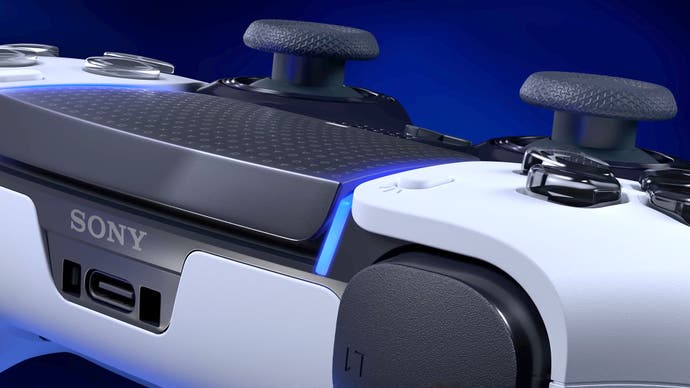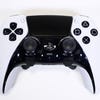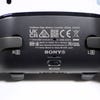Sony Dualsense Edge PS5 controller review: features beyond compare
A serious upgrade for the enthusiast, with some drawbacks.
More than two years on from the PS5's release, Sony's new DualSense Edge controller offers a premium upgrade over the gamepad bundled with the console - and a rival to Microsoft's Xbox Elite controller. It's a competition-focused pro gamepad with back paddles, fully remappable buttons, adjustable triggers and swappable parts. The Edge costs a steep £210/$200 at launch - so is it worth the premium? And how does it compare to third-party alternatives - not to mention the Xbox Elite controller? Let's find out.
First, let's give the original DualSense its dues. The £60/$70 controller got off to a flying start, with the bundled Astro's Playroom game showcasing its features beautifully at launch - from adaptive triggers and haptic feedback to a speaker, gyrometer and accelerometer. Other titles like Returnal and Ratchet and Clank: Rift Apart make great use of the hardware features too, but there's also much more basic implementations - like in Call of Duty, where the trigger resistance is more a barrier to the action than an immersive revolution.
Despite this mixed success in using its more advanced features, the DualSense is also an ergonomically superior controller to its predecessors - and that carries over to the DualSense Edge too.
Of course, we wouldn't expect anything less for a controller that costs £210, $200 or €240 - that's around 3.5x as expensive as the regular DualSense, so the Edge really has to deliver. Let's take a look at what comes in the box before we get into the highlights - and the lowlights.
The Edge comes in a hard white case, matching the PS5 perfectly, with a long braided USB-C cable and a bevy of spare paddles and thumbsticks. You can charge the controller in the case, thanks to a hatch in the back, with an extra plastic connector that lets you physically lock the USB cable into the controller - just for peace of mind, I guess.
As for the Edge controller itself? Well Sony doesn't change what already worked. The fit and feel in the hands is near identical to a regular DualSense in terms of its dimensions. The handles, button placement, stick placement are just the same, down to the millimetre. There are some subtle tweaks elsewhere though - including a higher weight at 335g, compared to the 280g of the regular DualSense. The bottom half of the controller has a glossy black plastic and the trackpad and buttons come in black too. Beyond that? Well, this is where we start seeing the first of the new features. The major benefits, and their corresponding drawbacks.
So, advantage number one is its replaceable analogue sticks. I'm not talking about just the tops of the sticks either - although you do get three pairs of alternative options, each in a different style. Instead, the whole stick module can be ejected by pulling a release slider at the back, opening up the front of the controller and allowing the entire mechanism to be replaced. Now, stick drift or a completely broken thumbstick can be fixed without binning an entire controller, though it's an involved procedure. The DualSense Edge offers a unique workaround in this sense. Perhaps we'll even see third-party replacement sticks for this thing - for example, Hall effect joysticks, which are much more durable and therefore can have much tighter dead zones, would be incredible.
This modular approach makes a lot of sense. However, don't expect to get your replacement stick modules for free - you'll have to pay £20/$20 each, or double that for a pair on Sony's website. And if you're replacing two sticks, you're most of the way to affording an entirely new regular DualSense. So if you're primarily buying this for the luxury of swappable sticks, or avoiding stick drift, bear in mind there's an extra cost attached.
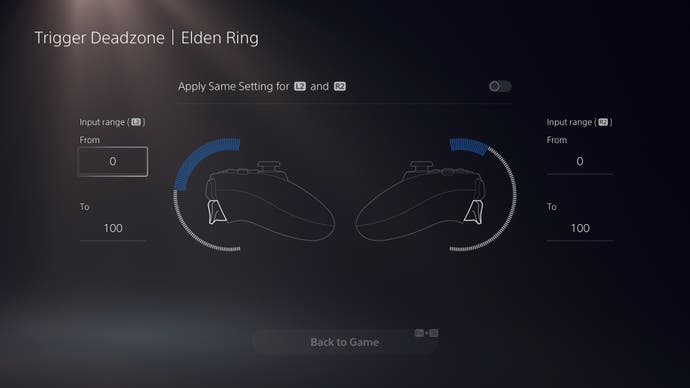
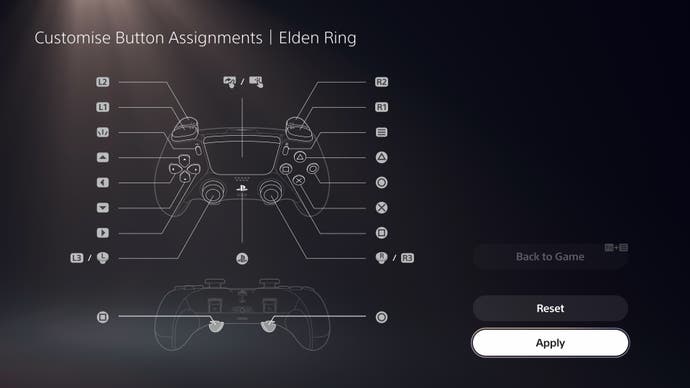
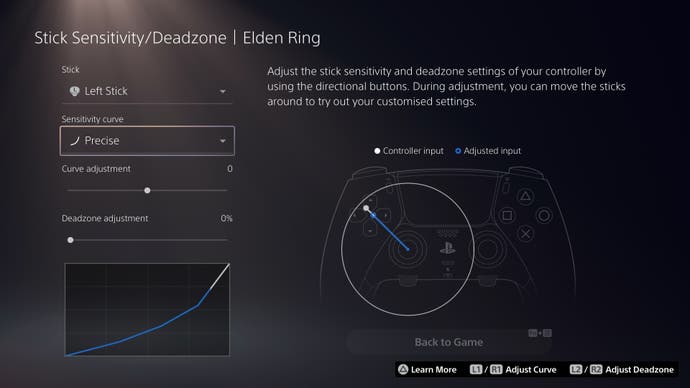
The second benefit of the Edge is that you get trigger adjustments for competitive shooters. Two sliders on the back of the controller allow you to set a physical stopping point for the trigger press, transforming from the full distance travel ideal for racing games, to a hair trigger arrangement better suited for firing guns in FPS titles. In my experience though, it's not as tight as it could be - third-party alternatives like the Hex Gaming Rival Pro can have a trigger travel of just 2mm, beating the Edge in immediacy of response. But then, the Rival Pro controller is only set up for FPS games, whereas the Edge provides the flexibility to play the full gamut of PS5 titles.
Point number three is perhaps the most transformative upgrade: the back paddles. Just like the Xbox Elite controller, the DualSense Edge sports magnetically attached, metallic back buttons that are easily swappable. Included in the box are two styles, long and short, and positioning-wise they land perfectly on those spare ring fingers. Crucially, they bring all the benefits you'd expect of two extra inputs; for Elden Ring and other Soulslike titles, it means no more awkward claw hand positioning to press the circle button to run while nudging the analogue stick for camera control. With the DualSense Edge, you can just assign that circle 'run' button function to the back right paddle instead. Put item use on the left paddle, instead of square, and job done - your right thumb now rarely needs to leave the stick in battle, putting you in full control.
The ability to re-map to the paddle buttons is handy, but Sony goes a step further. Integrated into the PS5 front-end is a full menu just for DualSense Edge owners. Here, we're able to remap anything: whether it be the face buttons, d-pad or touch-pad inputs. It's possible to totally reinvent the layout of any game - much like on Xbox's controller menu. We're given full control of stick calibration as well via a slick menu, with different velocity curves and even tweakable trigger dead zones per stick. I've got to say, having it all integrated into the PS5 menus gives DualSense Edge a huge advantage over third party options - and again, it's all fully remappable. Just pressing a FN button at the front of the Edge lets you swap between three profiles and the default settings. Oddly, there are two FN buttons, left and right, to access this extra menu when one might have done the trick, so perhaps there's an opportunity here to add more profiles based on which FN button you press.
For all its huge customisation benefits, the DualSense Edge has one clear drawback: you only get two back paddles to work with, compared to four on the Xbox Elite controller and even third-party efforts like the Scuf Relex Pro, for instance. Especially in FPS titles like CoD, four back paddles lets you remap all face buttons so your right thumb never needs to leave the stick. Unfortunately, for the Edge, you have to pick your two most commonly used actions - so I went for jump and reload in Modern Warfare 2. And for all the advantages in Elden Ring, it's clear four buttons here would be even better, perhaps putting the extra two on task for switching items. Again, the back paddles feel like the DualSense Edge's most transformative advantage given the PS5 OS support, but having only two is a bit of a disappointment.
Lastly then, a note on battery life. The regular DualSense is rated for approximately 12-15 hours, even if it often feels like less in my experience. However the DualSense Edge by Sony's admission has an even lower battery life. A teardown online (embedded below) confirms exactly why this is, too. Internally, the Edge appears to pack a 1050mAh battery, compared to 1560mAh on the original DualSense. It's frustrating - the Edge model has incredible flexibility, but it doesn't address a big criticism of the standard controller, which is a shame.
Overall, the DualSense Edge has features beyond compare in the PS5 controller space. Firstly there's the official OS-level support, allowing for complete button remapping and minute control over every stick and input. Secondly, there's the fact both analogue stick modules on the Edge are replaceable with new official units - albeit at an extra cost. Also huge plusses are the customisable paddles, analogue tops, the adjustable trigger travel, and the lovely hard case. It's a great package. At £210/$200, it's a serious upgrade for the enthusiast.
That said? It's hard to ignore the downsides as well. Microsoft's equivalent Elite controller goes for a much lower £140 price tag right now, to start, and while the Elite doesn't have replaceable stick modules, it matches almost every other bullet-point of the Edge while also adding in four back paddles. Sony's effort with the Edge is strong, no question, but Microsoft has fine-tuned and perfected its own premium pad years ahead of it, making it hard to beat.
As a way of tying this review together then, I actually asked Digital Foundry's Will Judd if he could send over similar 'competitive' options to the Edge - thankfully, he's been testing the best controllers for a little while now, including three Edge alternatives.

First up is the Scuf Reflex Pro which costs £220 for the PS5 model. (In this case we have the Xbox 'Instinct' model, though the PS5 version works in a similar way.) Feature-wise you get rubberised grips and four back buttons with custom profiles to re-map buttons. For £250, there's a more expensive Reflex FPS model as well, which removes adaptive trigger support, and replaces both triggers with 'instant' shorter press inputs. Sadly it seems for the PS5 model, there's no way to adjust trigger styles with a physical switch as is possible on the Xbox equivalent. It's one or the other, depending on your order. That higher-end model is ideal for shooters, then, but for all-round compatibility, the Scuf Pro is more flexible. The controller feels great in the hand, and there's the option to choose your own custom designs too - for a higher price.
Next up is an offering from Megamodz (the gold design in the pictures). This 'eye-catching' controller would cost around $170, but you're able to customise the controller to your tastes. And Megamodz really do live up to their name; it's an official DualSense controller at its core, just with every modification possible - customisable shoulder button travel, two back paddles, mechanical face buttons, mods for rapid fire and other cheating-grade options. There's extensive colour and theme options, too, with fully equipped controllers costing upwards of $300. It's potentially still very expensive then - and hard to feature-match the DualSense Edge for the price. But for a personalised touch, Megamodz is an interesting route to go down.
Last up, the Hexgaming Rival Pro in its full 420 glory (also pictured above). Thankfully, other designs are available, and you get similar features to the Edge for a similar price - $200. You get multiple, changeable thumbstick tops in the package and four back buttons, all remappable via the controller itself. There's also a lower, 2mm travel distance for triggers on this Rival Pro versus the 7mm of a standard DualSense. Though again, the travel is fixed in place, and so there's no way to adjust it from game to game as with the official premium controller.
Looking at the third-party competition, the DualSense Edge really does hold up in terms of features for its price. Most of the alternatives do have a unique plus point - like shorter travel, more back buttons - but the cost ramps up accordingly. And it seems getting adjustable triggers into the bargain is a big ask on PS5 third party solutions too.
So that leaves the DualSense Edge in a decent place, I'd say. The original DualSense is of course a much better value proposition and is more than good enough for most people, but if you do spend a lot of time gaming on PS5 - especially in competitive titles - then the Edge does deliver some key advantages for the extra investment, while offering flexibility, repairability and OS-level integration that third-party alternatives can't match.
